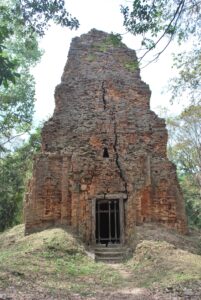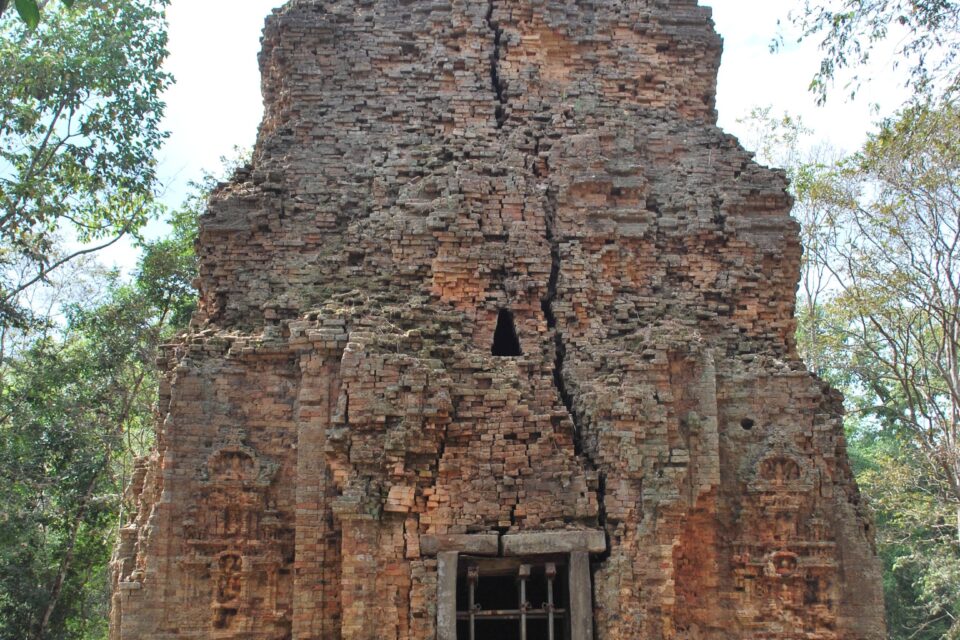Prasat Sambor is the greatest temple compound among the Sambor Prei Kuk monuments. This compound was a Hindu temple devoted to Shiva. There are several brick shrines and triple enclosure walls surrounding the main tower. One side of the outermost enclosure wall is 389 meters long, and an earthen causeway extending more than 2 kilometers eastward from the enclosure’s eastern gate.

Five inscriptions have been unearthed at this temple. Some inscriptions described “Isanavarman I,” a ruler of the Chenla dynasty in the early seventh century. Other inscriptions mention “Rajendravarman II,” a monarch of the Angkor dynasty in the tenth century. The style of the statues discovered in this temple is likewise from the early seventh and tenth centuries. Because of these factors, it is thought that this temple was first discovered in the early seventh century, with some renovations in the tenth century to accommodate religious changes. We do not know the name of the major deity who was consecrated at the center in its early days, but the main deity during the renovated time was recognized as “Gambhirecvara”. Some renovating traces were discovered during recent archaeological surveys, demonstrating religious renovation in this temple complex in the 10th century.
Although every shrine originally had a statue on a pedestal, many of them were stolen, and just a few are now on display in the museum. Durga and Harihara statues, which were previously held in Phnom Penh’s National Museum, were recently copied and put in the N9 and N10 towers. At the period, a variety of gods and goddesses were devoted in each building of this temple complex, which may have included the Hindu Pantheon.
Vajimukha (horse-headed deity) representing either Kalkin (future avator of Vishnu) was originally dedicated in N7 shrine which is octagonal brick tower. This statue is exhibited in Guimet Museum
today.
N17 shrine has one of the most rich carvings; vegetation pattern, deity head in arch window, monster head and so on. This small sandstone building might be the inner part of the nested structure, and wooden outer structure was lost.




